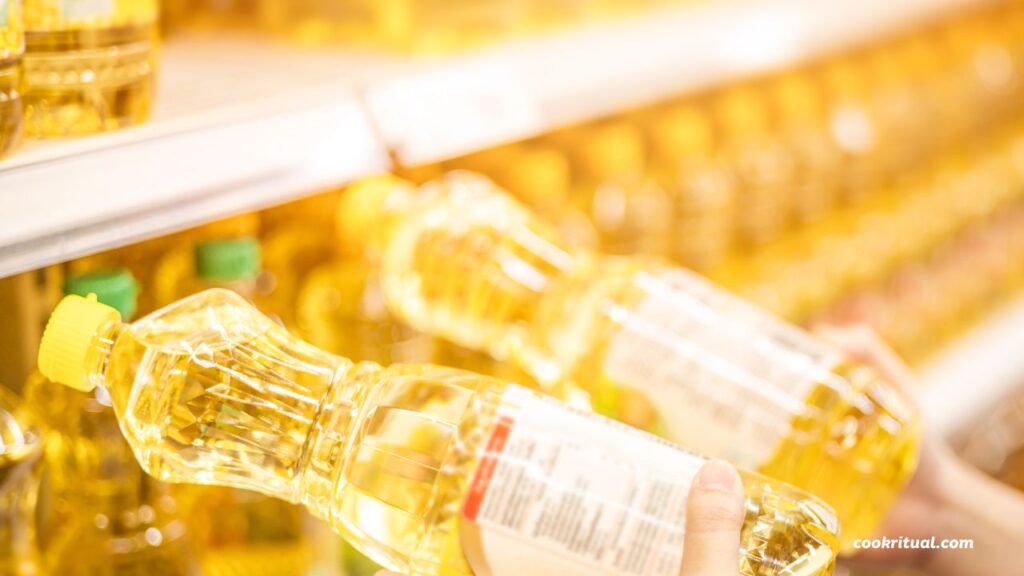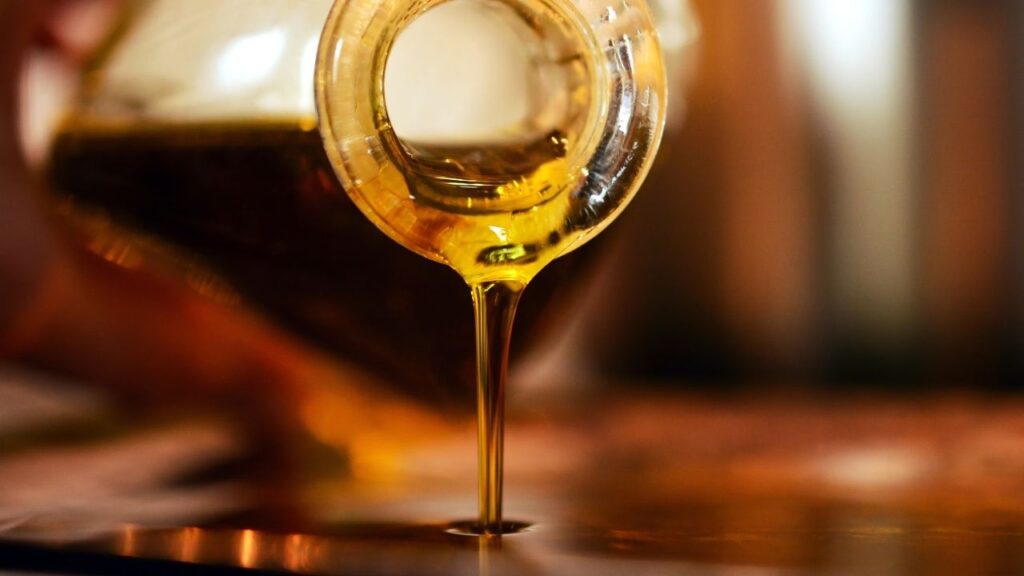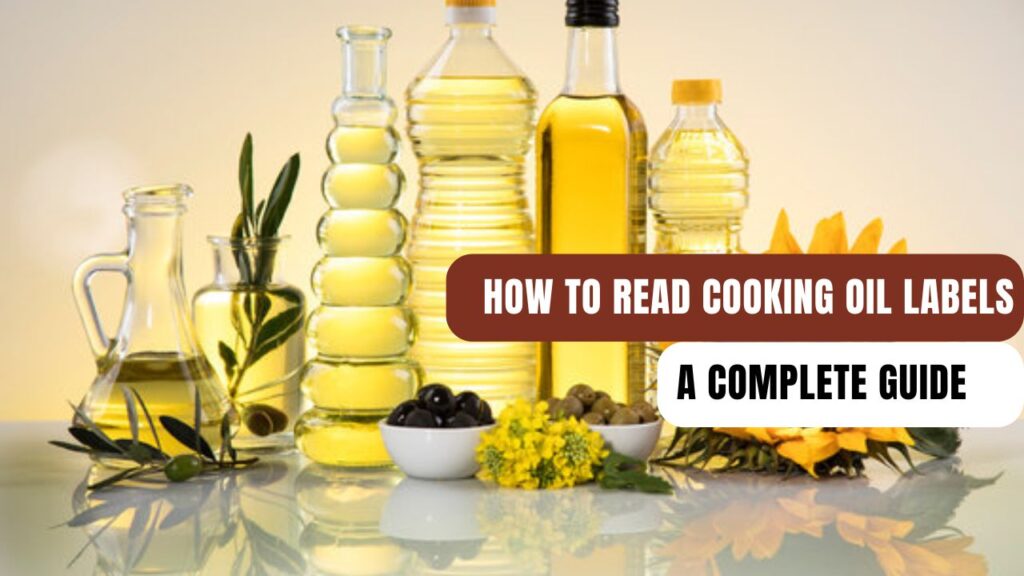Understanding how to read cooking oil labels is one of the most overlooked yet powerful steps toward healthier eating and smarter grocery shopping. Whether we’re sautéing veggies, tossing a salad, or prepping for a deep fry, the oil we choose—and how we choose it—makes a huge difference in our meals and our health.
For many of us, standing in front of a wall of oils at the grocery store can feel overwhelming. Organic, cold-pressed, high-oleic, expeller-pressed… what do these labels even mean? And which oil is actually the best choice for our cooking style, taste preference, and wellness goals?
In this complete guide, we’ll break down everything we need to know about reading labels on cooking oil bottles. From decoding fat content to understanding health claims and certifications, we’ll explore the facts in a way that’s simple, practical, and actionable. Plus, we’ll offer real-world tips to help busy home cooks make smart, confident choices in the kitchen.
Contents
- 1 What to Look for on a Cooking Oil Label
- 2 Understanding Health Claims and Certifications
- 3 Cold-Pressed vs Refined Oils: Which Is Better?
- 4 Comparing Popular Cooking Oils (With Table or Chart)
- 5 Practical Tips: How to Choose the Right Oil at the Store
- 6 Storage, Shelf Life, and Proper Maintenance
- 7 FAQs About Cooking Oil Labels
- 8 Buying Guide: Recommendations for Health-Conscious Shoppers
- 9 Summary and Actionable Next Steps
What to Look for on a Cooking Oil Label

Choosing the right oil starts with knowing what’s on the label. Labels aren’t just marketing—they’re a map to the oil’s quality, health value, and cooking performance. Here’s what we should always check:
Types of Oils
The oil’s source affects its taste, nutrition, and use in the kitchen. Common types include:
- Olive oil – Great for sautéing and dressings; heart-healthy.
- Canola oil – Mild flavor, good for baking and stir-frying.
- Vegetable oil – Usually a blend; good for general use.
- Avocado oil – High smoke point, perfect for high-heat cooking.
- Sunflower and safflower oils – Light taste, often used in salad dressings.
- Coconut oil – High in saturated fat; solid at room temp.
When choosing, match the oil type to the cooking method and personal health goals.
Oil Extraction Methods
Look for how the oil was made. Labels may list:
- Cold-pressed – Extracted without heat; keeps more nutrients.
- Expeller-pressed – Uses friction but may produce some heat.
- Refined – Treated for neutral flavor and higher smoke point.
- Unrefined – Less processed; stronger flavor and more nutrients.
Cold-pressed and unrefined oils are often the best picks for those who want a more natural, nutrient-rich option.
Fat Content Breakdown
Cooking oil labels list different kinds of fats:
- Saturated fats – Found in coconut and palm oil; solid at room temp.
- Unsaturated fats – Heart-healthy; found in olive, canola, and avocado oil.
- Trans fats – Avoid these. Even tiny amounts can harm heart health. Some refined oils may contain trace levels.
The American Heart Association recommends using oils with more unsaturated fat and little to no saturated or trans fat.
Smoke Point Information
Some bottles list a smoke point, which is the temperature where oil starts to smoke and break down. If not listed, look it up. For example:
- Avocado oil: ~520°F
- Refined canola oil: ~400°F
- Extra virgin olive oil: ~375°F
Higher smoke points are best for frying or searing, while lower ones work well for salads or light sautéing.
Label Terms Explained
Marketers love using fancy terms. Here’s what they usually mean:
- Non-GMO – Made without genetically modified ingredients. Learn more at the Non-GMO Project.
- Organic – Certified to meet USDA organic standards.
- Cholesterol-free – All plant oils are naturally cholesterol-free.
- Light – Refers to flavor or color, not fat content.
- High-oleic – Rich in heart-healthy monounsaturated fats.
Read labels carefully. Sometimes “light” oils are highly refined and not the healthiest choice.
Decoding Nutrition Facts on Oil Bottles
Nutrition labels tell us exactly what we’re putting into our meals. Here’s how to break it down quickly:
Serving Size and Calories
Most oils list a serving as 1 tablespoon, which usually has 120 calories. This adds up fast, so it’s important to use oils mindfully—even the healthy ones.
Daily Value of Fats
The fats listed include:
- Total fat
- Saturated fat
- Trans fat
- Monounsaturated fat
- Polyunsaturated fat
Look for oils high in mono- and polyunsaturated fats, which help lower bad cholesterol and reduce heart disease risk, according to Harvard Health.
Presence of Omega-3 and Omega-6
Some oils list omega fats. These are essential for brain and heart health. Flaxseed oil, canola oil, and walnut oil are good sources of omega-3s. A balance between omega-3 and omega-6 is best for overall health.
Identifying Added Ingredients or Preservatives
Always check the ingredients list. Pure oils should list just one ingredient. If you see BHA, BHT, or TBHQ, those are preservatives. While generally recognized as safe, many health-conscious cooks prefer oils without additives.
Understanding Health Claims and Certifications

Health claims on oil bottles can guide us—or mislead us. Here’s how to tell which ones actually matter.
What “Heart-Healthy” Really Means
Many oils claim to be “heart-healthy,” but what backs that up? Oils like extra virgin olive oil and canola oil are supported by science. According to the FDA, qualified health claims must be based on solid evidence.
Look for oils with:
- High monounsaturated fats
- Low saturated fat
- No trans fat
These align with what major health groups recommend for heart protection.
Meaning of USDA Organic, Non-GMO Project Verified, etc.
Here’s a quick breakdown of common certifications:
| Label | What It Means | Why It Matters |
| USDA Organic | Meets USDA standards for organic farming | No synthetic pesticides or GMOs |
| Non-GMO Project Verified | Tested to avoid GMOs | Preferred by those avoiding genetic modification |
| Certified Paleo/Keto | Fits those diet guidelines | Useful for specialty diets |
| Heart-Check Mark (AHA) | Meets AHA criteria | Backed by trusted health research |
How to Verify Label Claims
If a claim seems too good to be true, check the brand’s website or a reliable source like the USDA Food Labeling Guide. Trusted certifications will always be easy to confirm.
Cold-Pressed vs Refined Oils: Which Is Better?

Understanding how oil is made can help us choose the best one for our needs. The process affects flavor, nutrition, and how the oil performs in cooking.
Key Differences in Production and Nutrients
- Cold-pressed oils are made without heat. This helps them keep more nutrients, like vitamin E and polyphenols.
- Refined oils are processed with heat and chemicals. This makes them last longer and removes strong flavors.
According to Harvard T.H. Chan School of Public Health, cold-pressed oils tend to be more nutritious but spoil faster. Refined oils are more stable and better for high-heat cooking.
Best Uses for Each Type
- Use cold-pressed oils in salad dressings, dips, or drizzling on cooked food.
- Use refined oils for frying, grilling, or baking at high temperatures.
Pros and Cons of Refined vs Unrefined Oils
| Feature | Cold-Pressed (Unrefined) | Refined |
| Nutrient content | Higher | Lower |
| Flavor | Stronger | Milder |
| Shelf life | Shorter | Longer |
| Smoke point | Lower | Higher |
| Best use | Dressings, drizzling | Frying, roasting |
If we want more nutrients, go for cold-pressed. For cooking with heat, refined is safer and more stable.
Comparing Popular Cooking Oils (With Table or Chart)
Picking the right oil is easier when we compare them side by side. Below is a chart with the most common oils and how they stack up.
| Oil Type | Best For | Smoke Point (°F) | Fat Profile | Notable Benefits |
| Extra Virgin Olive | Sautéing, dressings | ~375 | High in monounsaturated fats | Heart-healthy |
| Avocado | Grilling, searing | ~520 | High in monounsaturated fats | High smoke point, nutrient-rich |
| Canola | Baking, stir-frying | ~400 | Low in saturated fat | Good omega-3 source |
| Coconut | Baking, medium heat | ~350 | High in saturated fat | Distinct flavor, stable for cooking |
| Vegetable (blend) | Frying | ~400 | Varies | Affordable, widely available |
| Sunflower (High Oleic) | Roasting, salad | ~450 | High in monounsaturated fats | Light flavor, good stability |
Each oil has its strengths. For heart health, olive and avocado oils are strong picks. For frying, go with higher smoke point oils like sunflower or refined avocado.
Practical Tips: How to Choose the Right Oil at the Store
It’s easy to feel lost in the oil aisle. But with a few tips, we can shop smarter and faster.
Matching Oil Type to Cooking Method
Here’s a simple way to decide:
- Low heat or raw (like salad dressings): Extra virgin olive or flaxseed oil
- Medium heat (like baking): Canola or coconut oil
- High heat (like frying): Avocado, sunflower, or refined peanut oil
Learn more about smoke points and safe cooking at Cleveland Clinic.
How to Read Labels Quickly and Effectively
When shopping, glance at:
- The fat profile (aim for low saturated fat, no trans fat)
- Extraction method (cold-pressed = more nutrients)
- Certifications (USDA Organic, Non-GMO)
- Ingredients list (should say just one oil)
Avoid oils with unclear terms like “natural blend” or “light” unless the label explains exactly what’s inside.
Red Flags to Watch Out For
- “Hydrogenated” or “partially hydrogenated” oils – These may contain trans fats
- Vague blends with no source info
- Artificial additives or preservatives
We should also steer clear of oils that have been sitting too long on the shelf. Check the bottling or expiration date before buying.
Storage, Shelf Life, and Proper Maintenance
How to Store Oils Correctly
To keep cooking oils fresh and safe:
- Store them in a cool, dark place, like a pantry or cupboard
- Keep lids tightly closed to avoid exposure to air
- Use dark glass bottles when possible—they block harmful light
Light, heat, and air speed up oil spoilage. This leads to rancid smells, bad taste, and lost nutrients. The USDA recommends checking oils for off odors or cloudiness before using.
Signs of Rancid or Spoiled Oil
How do we know if an oil has gone bad? Watch for:
- A crayon-like or sour smell
- Sticky residue around the cap
- Cloudy or thick appearance (for oils that should be clear)
Don’t use oils past their prime—they may lose health benefits and add unpleasant flavor to food.
Shelf Life of Common Cooking Oils
| Oil Type | Shelf Life (Unopened) | Shelf Life (Opened) |
| Extra Virgin Olive Oil | 12–24 months | 6–12 months |
| Avocado Oil | 12 months | 6–9 months |
| Canola Oil | 12 months | 6–12 months |
| Coconut Oil | Up to 2 years | 1–2 years |
| Sunflower Oil | 12 months | 6–12 months |
Check the “best by” date and write the opened date on the label when you first use it.
FAQs About Cooking Oil Labels
Is cold-pressed oil always healthier?
Cold-pressed oils usually keep more nutrients and flavor. But they don’t always work for high-heat cooking. We need to match the oil to how we cook.
Are all vegetable oils the same?
No. “Vegetable oil” is often a mix of oils like soybean, corn, or canola. Always check the ingredients list for exact contents.
How do I know if an oil is high-quality?
Look for:
- A clear source (e.g., 100% extra virgin olive oil)
- Cold-pressed or expeller-pressed on the label
- Certifications like USDA Organic or Non-GMO
Also, choose oils in dark bottles and avoid very cheap or unclear blends.
Can I reuse cooking oil?
It’s safe to reuse oil a few times if it hasn’t burned, but strain it and store it in a clean, sealed container. The University of Illinois Extension advises against reusing oil that smells off or has darkened.
Buying Guide: Recommendations for Health-Conscious Shoppers
Here’s how we can make smart, healthy oil choices every time we shop:
Top Picks Based on Cooking Style and Diet
- For heart health: Extra virgin olive oil, avocado oil
- For high-heat cooking: Refined avocado, sunflower, or peanut oil
- For plant-based or raw diets: Cold-pressed flaxseed or walnut oil
- For keto or paleo: Coconut oil, avocado oil
What to Avoid on Labels
- “Partially hydrogenated” or “hydrogenated” oils
- Oils with added artificial flavors, colors, or preservatives
- Vague terms like “vegetable blend” with no detail
Budget-Friendly Healthy Oil Options
- Canola oil – Inexpensive and heart-healthy
- Sunflower oil – Great for cooking and light on the wallet
- Store-brand extra virgin olive oil – Often just as good as premium brands
Shop in bulk stores or look for sales to save on healthier choices.
Summary and Actionable Next Steps
Reading cooking oil labels isn’t just for food nerds—it’s for all of us who want to cook smart, eat better, and protect our health. From the type of oil to its fat profile and certifications, every detail matters. Here’s what we can do next:
- Choose oils with healthy fats and no trans fat
- Match the oil to our cooking method
- Check for certifications like USDA Organic or Non-GMO
- Store oils right to keep them fresh
- Avoid unclear blends and misleading terms
Ready to upgrade your kitchen? Try swapping out your current oil for a cold-pressed or high-oleic version and see how it changes your cooking game.

